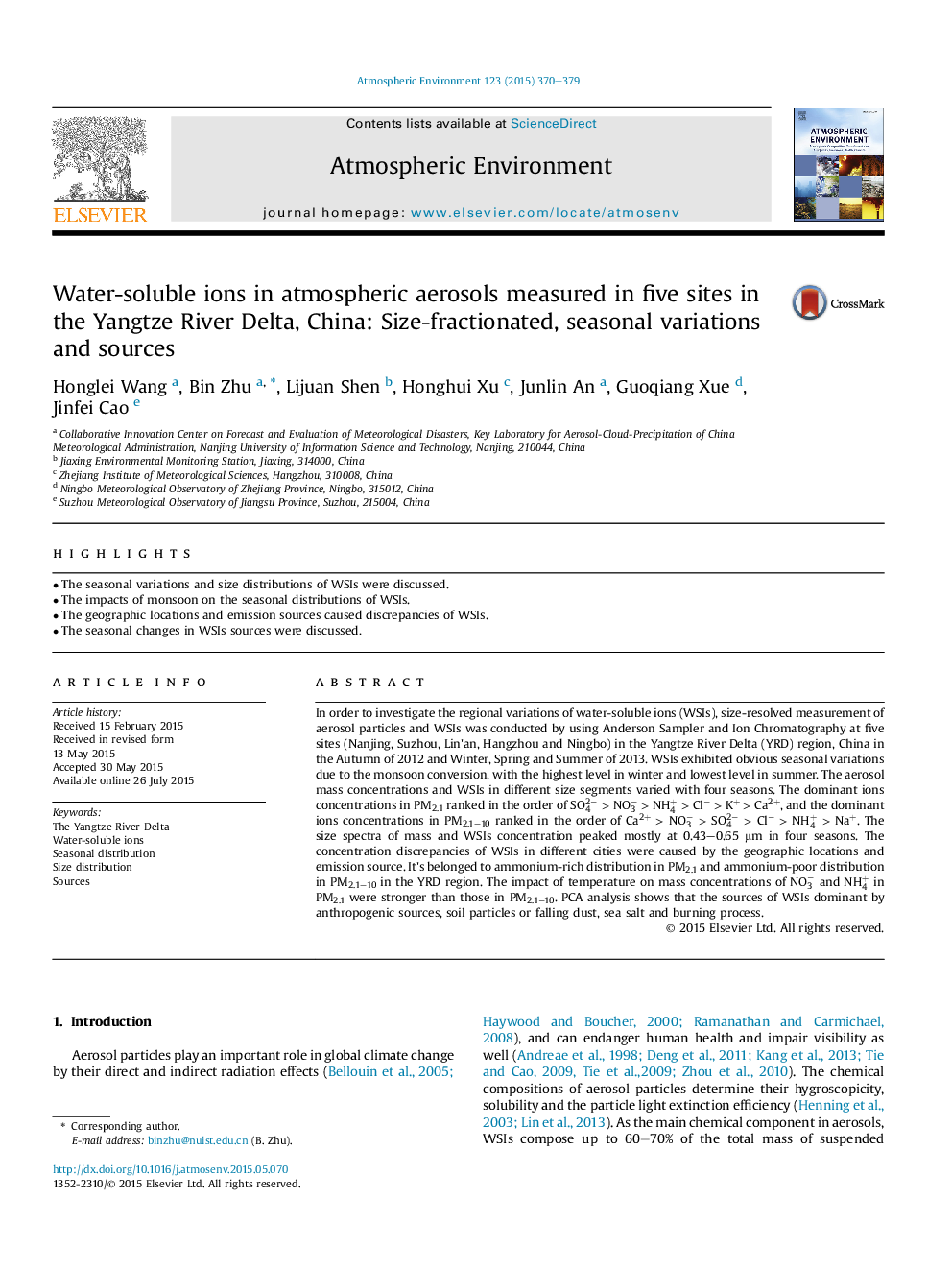| کد مقاله | کد نشریه | سال انتشار | مقاله انگلیسی | نسخه تمام متن |
|---|---|---|---|---|
| 4438095 | 1310931 | 2015 | 10 صفحه PDF | دانلود رایگان |
• The seasonal variations and size distributions of WSIs were discussed.
• The impacts of monsoon on the seasonal distributions of WSIs.
• The geographic locations and emission sources caused discrepancies of WSIs.
• The seasonal changes in WSIs sources were discussed.
In order to investigate the regional variations of water-soluble ions (WSIs), size-resolved measurement of aerosol particles and WSIs was conducted by using Anderson Sampler and Ion Chromatography at five sites (Nanjing, Suzhou, Lin'an, Hangzhou and Ningbo) in the Yangtze River Delta (YRD) region, China in the Autumn of 2012 and Winter, Spring and Summer of 2013. WSIs exhibited obvious seasonal variations due to the monsoon conversion, with the highest level in winter and lowest level in summer. The aerosol mass concentrations and WSIs in different size segments varied with four seasons. The dominant ions concentrations in PM2.1 ranked in the order of SO42− > NO3− > NH4+ > Cl− > K+ > Ca2+, and the dominant ions concentrations in PM2.1–10 ranked in the order of Ca2+ > NO3− > SO42− > Cl− > NH4+ > Na+. The size spectra of mass and WSIs concentration peaked mostly at 0.43–0.65 μm in four seasons. The concentration discrepancies of WSIs in different cities were caused by the geographic locations and emission source. It's belonged to ammonium-rich distribution in PM2.1 and ammonium-poor distribution in PM2.1–10 in the YRD region. The impact of temperature on mass concentrations of NO3− and NH4+ in PM2.1 were stronger than those in PM2.1−10. PCA analysis shows that the sources of WSIs dominant by anthropogenic sources, soil particles or falling dust, sea salt and burning process.
Journal: Atmospheric Environment - Volume 123, Part B, December 2015, Pages 370–379
